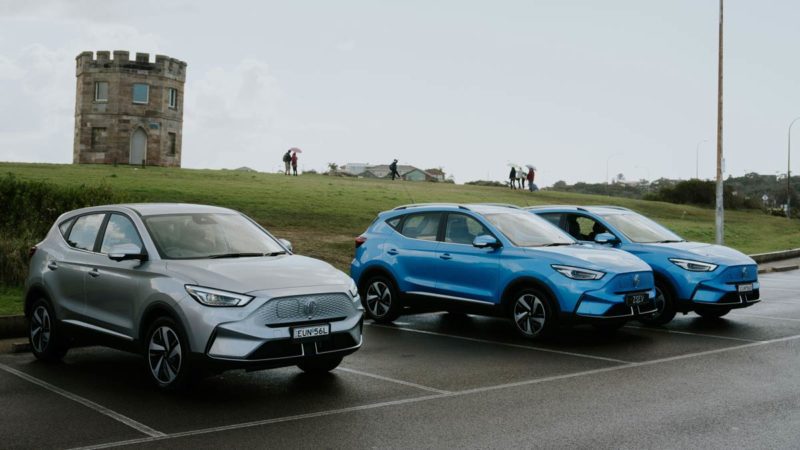A detailed analysis of the total cost of ownership by Australia’s biggest bank, the Commonwealth Bank of Australia, shows that an electric car can cost the same as its petrol equivalent, as long as it is powered by rooftop solar.
The report is significant, because while various car makers and their supporters have claimed that their EVs are cheaper to run that other company’s petrol or diesel cars, this is the first detailed analysis in Australia of the EV and petrol models produced by the same company.
The CBA analysis looks at the MG ZS Excite model, which has long been produced with a petrol engine and in 2021 was rolled out with a full battery electric variant, the MG ZS EV.
The electric version costs a lot more than the petrol version – $41,990 versus $31,990 – and even more $43,990 if you add in the cost of a new rooftop solar system (CBA allocates around 30 per cent of the cost of the rooftop solar system to the cost of the EV because it says that is its share of consumption).

But CBA argues that this price difference is virtually eliminated over time by the low cost of charging an EV, which will cost just $1,242 when using rooftop solar, compared to $13,109 when using petrol.
The calculations are based on 11 years of ownership and an average of 15,000 kms travelled a year. Other assumptions include $1.90 a litre for petrol, and 7c a kWh for solar feed in tariffs (which are foregone when sending the solar into the car battery). Insurance costs are higher for the electric car, but are nearly offset by the lower cost of maintenance (see table below).
In total, the CBA estimates the total cost of ownership of the petrol MG ZS Excite over the 11 years to be $69,231, and for the rooftop solar charged MG ZS EV it is $70,007. That works out at an average cost of 42c per kilometre for each car.
An electric MG ZS charged through the main grid (and paying 33c/kWh) will cost a total of $72,466, or an average of 44c/kWh, or seven per cent higher than the ICE version.
An electric MG ZS charged with public fast charging infrastructure only will cost a total of $77,463, or an average 47c/kWh, or about 11 per cent charger than an ICE version.

Of course, an EV owner – assuming they have access to charging at home – is likely to use a variety of charging methods over the year – mostly solar, but sometimes from the grid if charging at night, and then at public charging at other times while travelling or just for the sake of convenience.
“Making an apple to apple comparison between an ICE and an EV can be challenging, especially if the two cars are from different manufacturers,” the CBA said.
“EV price premiums are shrinking in Australia.
“The combine purchase price and running costs of EVs (including electricity, insurance and maintenance) can make their total cost of ownership similar to a petrol vehicle.”
The CBA says the surveys show that 77 per cent of Australians intend to most of their EV charging at home, but 40 per cent of them think that home charging is too expensive. This survey should help allay some of those fears and misunderstandings.


Giles Parkinson is founder and editor of The Driven, and also edits and founded the Renew Economy and One Step Off The Grid web sites. He has been a journalist for nearly 40 years, is a former business and deputy editor of the Australian Financial Review, and owns a Tesla Model 3.

